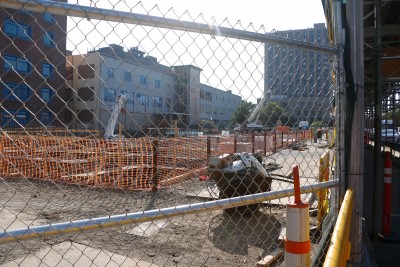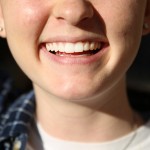
After construction began on Boston University’s new Center for Integrated Life Sciences and Engineering in May, the project continued over the summer and is on track for a March 2017 completion, wrote Walt Meissner, project executive for CILSE and associate vice president of operations at BU, in an email.
The nine-story CILSE building will be located at 610 Commonwealth Ave. and will house a number of research and learning facilities for various scientific disciplines.
Meissner said only a few minor scheduling issues arose during this summer’s construction.
“The summer went remarkably well,” he said. “We made modest changes to the sequencing of our schedule, but nothing out of the ordinary for a project of this size and complexity.”
Additionally, Meissner said although the current highly competitive construction market in Boston has its challenges, the project team is optimistic that all budget targets will be met. With the progress made this summer, workers were already able to lay CILSE’s foundational elements.
“We completed driving and setting the [building support system and pressure injected footings], and over the next month we will continue pouring the concrete base that the building will sit on,” Meissner said.
For this process, CILSE encroached slightly on the lawn outside of the College of Communication.
“There has been a lot of activity. The real construction work hasn’t taken place yet,” said BU spokesman Colin Riley. “Right now you essentially have the prep work, the site prep work and the safety elements going up to protect the nearby buildings and protect passersby.”
Construction is slated to continue during the academic year, but the project team has taken precautions for passing pedestrians, Meissner said.
“What you see now with the fence around the site and the covered walkway stretching in front of the building to accommodate pedestrians is how it will be for the next 18 months,” he said. “We will encourage pedestrians to avoid the site whenever possible by using Cummington Mall or the north side of Commonwealth Avenue.”
Riley said typically with BU construction projects, the external work is completed rather quickly.
“[It’s] not a long construction period, not a year-round construction period generally … as far as external work,” he said. “But, they’ll do it as long as they can and then enclose the building … so they can do interior work.”
During the duration of CILSE construction, organizers have taken steps to involve and educate the community on the project’s progress, Meissner said.
Semi-monthly community meetings are set to take place, Meissner said. The meetings are open for faculty, staff and students who teach and have labs in the surrounding area to be updated on the project’s progress and have the chance to ask questions. The next meeting will take place Thursday at 10:30 a.m. in Alfred L. Morse Auditorium.
According to a July 18 Expanded Project Notification Form, the completed project will assemble scientists and engineers alike.
“The Project will bring together outstanding scientists and engineers from across the University to work collaboratively on systems neuroscience and synthetic biology challenges,” the document stated. “The building will also house a state-of-the-art Center with powerful imaging technology that will serve as a shared core resource for human neuroimaging research at the University.”
Once completed, CILSE will provide academic, office and research space for BU’s interdisciplinary systems neuroscience and synthetic biology departments. Messiner said that CILSE will not only create a new and unique center for this interdisciplinary research, but it will also strengthen the university’s Systems Neuroscience and Synthetic Biology programs.
“[The ultimate goal is] to develop a Cognitive Neuroimaging Center supporting campus-wide research in disciplines ranging from neuroeconomics to neurocognition,” he said, “and be a symbol of the University’s strong commitment to these important scientific endeavors and to interdisciplinary initiatives.”




